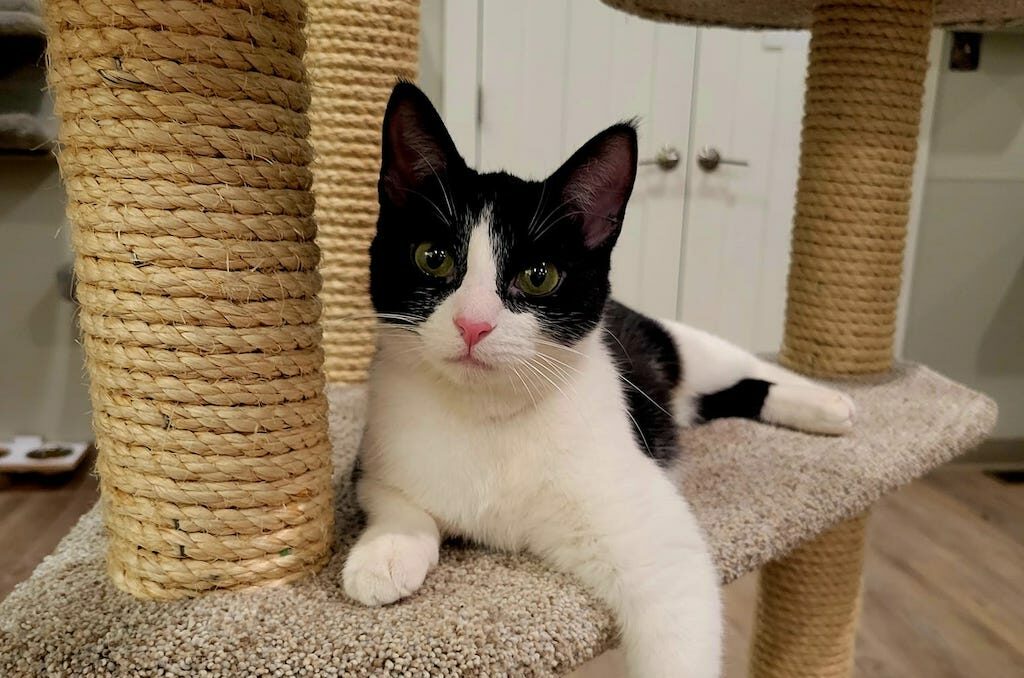
“Paws” Before You Declaw
by Liz Mausshardt, Feline Manager
Many years ago when I started working in veterinary care, I would see cats waking up from declawing surgery with their little paws all wrapped up. I started to ask the doctors WHY it had to be done. They explained that there was no medical reason for it. It was done primarily at the request of an owner who was wary about the potential for the cat to scratch furniture or damage belongings.
At Five Acres Animal Shelter, and shelters across the nation, we do not declaw or advise declawing for many reasons, and can help owners learn how to prevent this possible damage in other ways.
Every week, we see several surrender applications. Just last week, we received sixteen requests to surrender cats to our shelter. Two of the top reasons people surrender their pet is because the cat is having behavioral issues or the cat is not using the litter box. In many of those cases, the cat displaying these issues is declawed–an optional procedure that can cause those issues.
Experts no longer recommend declawing, many vets have discontinued performing declawing surgery, and we at Five Acres do not support declawing. Here’s why:
Behavioral Issues: Like other animals, cats communicate with their entire body. When cats’ claws are removed, they can become insecure about how they might be able to defend themselves or how they might be able to communicate with another animal. This insecurity can lead to fearfulness and aggression, and cats may look for a new way to defend themselves like biting or hissing.
Medical Concerns: Because declawing changes the way cats use their feet, removing claws may cause premature arthritis, which can be very painful. This could also lead to needing future procedures to alleviate their pain.
Aversion to the Litter Box: Cats are very sensitive creatures, and they have sensory receptors in their feet. Removing their claws sometimes makes their feet even more sensitive, which can make the cat feel like it’s stepping on a bed of sharp rocks when it steps on litter. This sensation can cause cats to find other places to relieve themselves.
Inappropriate Marking: Cats also use their sensory receptors to mark territory that they really love, like a couch or carpet. Without claws, they may try to find other methods for marking their territory, like urinating where they aren’t supposed to.
Times change, and with more information available about how declawing can affect cat health and behavior, many veterinarians are no longer providing the surgery. Instead, they are choosing to provide educational materials to clients who want to declaw their animals. The key is understanding better ways of preventing and correcting scratching behaviors.
Similarly, at Five Acres we offer behavioral information at adoption time to help support successful and permanent placement. We find it much more beneficial for both the cat and the humans to be able to work with pet owners to troubleshoot behavioral problems and make small changes to keep pets where they belong: with their people.
